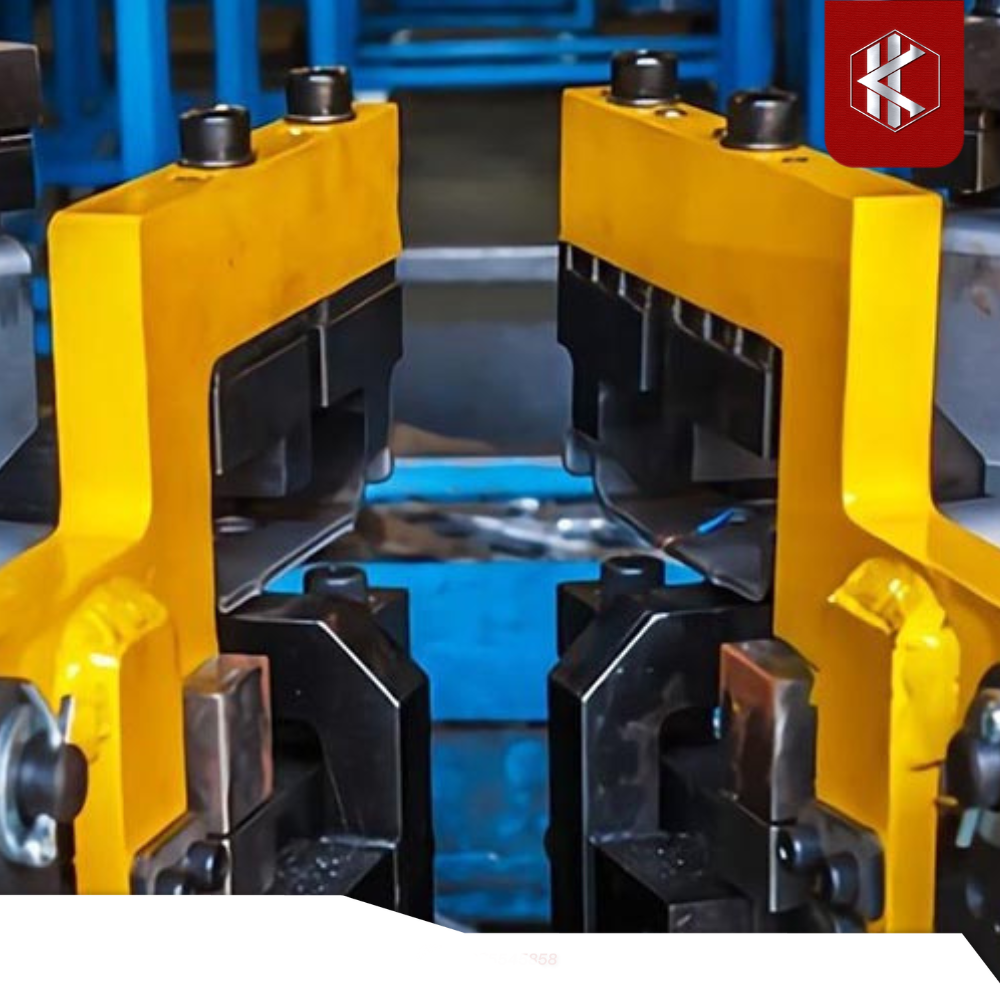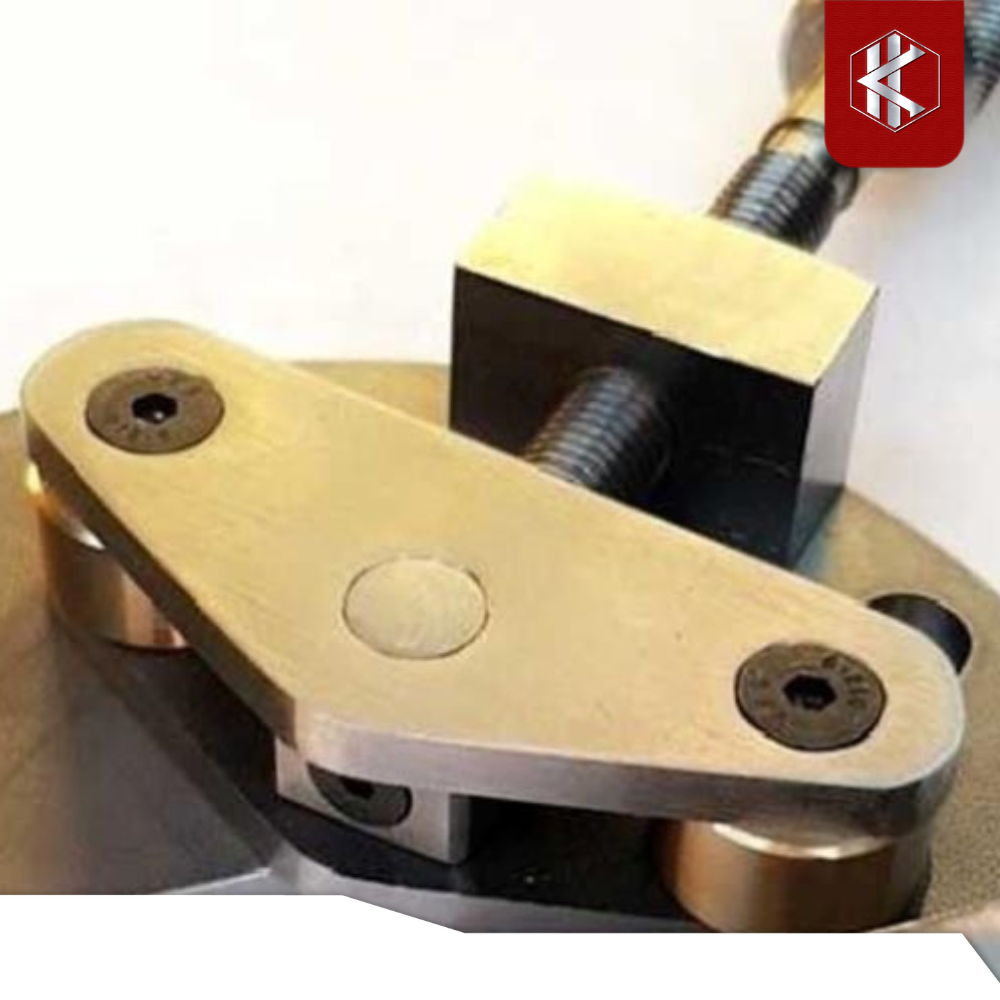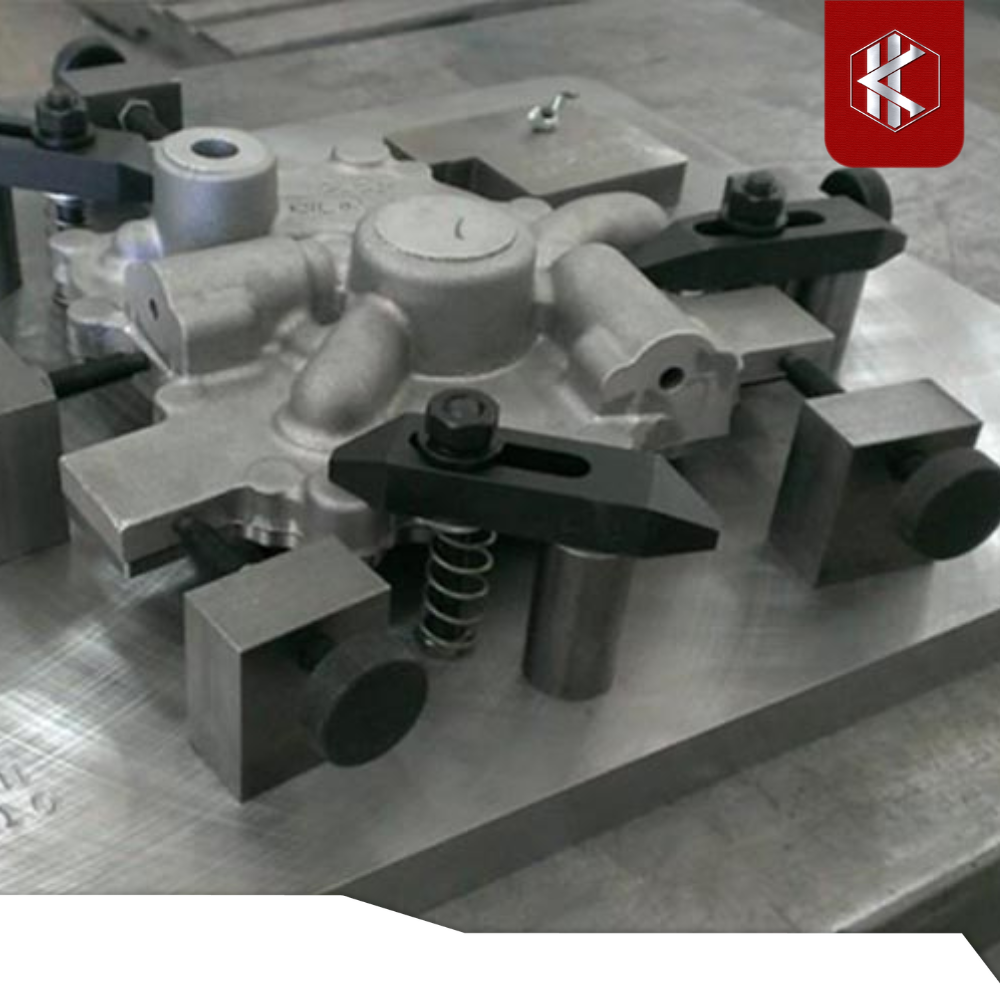Jig
Jigs are equipment used in the mechanical industry to determine the position and fix specific parts or component groups, and to support accurate operations.
Jigs are crucial for fixing during assembly, machining and inspection of the product. This equipment ensures accuracy of the products during the manufacturing and finishing process.
Applications
- Fix and maintain the materials to prevent movement during machining and ensure safe spacing between them.
- Quickly and accurately determine the position and size of the components, as well as their relationship to each other and to the cutting tools, to ensure product quality.
- Support the creation of movements to machine complex component surfaces.
- Adjust the position of the material during cutting, drilling, tapping, grinding, boring processes… to ensure precise machining
- Ensure the accuracy of products during design, assembly, such as in the automotive, aviation,…
Thus:
- Helps improve production capacity, making it easier to design, manufacture and machine complex and high-complexity components.
- Helps reduce investment costs, labors and time for the company.
- Improves the quality of products
- Contributes to the acceleration of technological processes and the promotion of machinery development in the mechanical industry.
- Helps eliminate errors during production and machining.
- Increases efficiency, accuracy and large-scale machining.
Structures
There are various designs of Jigs depending on their purposes (such as assembly, machining or inspection) and sizes, shapes of fixtures, machine parts, and materials. Basically, Jigs have the following main components:
- Clamping component
- Positioning component
- Power transmission component
- Rotational and angular structure component
- Jig and guide components
- Jig with clamping structures.
- Jig positioning component
Classifications
Although there are many different designs and shapes, Jigs can be classified into 6 main types based on their functions:
- welding Jig
- assembly Jig
- inspection Jig
- compression Jig
- milling Jig
- roughness measuring Jig
Each type has its own unique role.
Welding Jig
A welding Jig is a type of jig that helps position the product components in relation to the welding tool for welding of complexly structured and shaped components. It secures the product in place to ensure precision and enhance efficiency, while also ensuring the operator’s safety.
The large clamp bar keeps the welding jig stable under pressure, high temperatures, and movement. With high precision, the welding jig helps determine the position between the sheets and various welding and cutting tools. By fixing the position, it prevents external forces from affecting the process and minimizes their impact on production and assembly.
Assembly Jig
This is a widely used type of Jig, the assembly jig has the function of ensuring the accurate connection between individual components or components groups. It often used for products with complex structures, high accuracy requirements.
The assembly jig is applied in many different stages, such as clamping components during assembly, making jigs to hold components for assembly, transforming components to serve welding, stamping, and air compression processes in production. It helps the products achieve high accuracy and meet technical requirements.
Inspection Jig
This Jig type is used to inspect components from the beginning to the end of the production process. The inspection Jig helps to hold the product in place, ensuring that the product does not move or vibrate when subjected to external forces, helping technicians easily and accurately measure the thickness of components, check dimensions, etc. This ensures that the products produced meet the technical requirements.
Compression Jig
They are used to hold components in place before welding or assembly. The compression Jig have a simple structure, are easily detachable, and are highly effective in replacing manual labor in holding the components securely to complete the machining process, resulting in high work efficiency, safety, and time and cost savings.
Milling Jig
The Jigs used to position the material in a machining process on a milling machine are referred to as milling Jigs. Because of the high cutting forces during the milling process, the structure of the milling Jig must be sturdy and secure to prevent the material from deforming or tipping over.
The milling Jig consists of positioning components, clamping components, indicating components (for guidance), a Jig casing, and some unique components. This type of Jig can be further divided into several types, including single-component milling Jigs, multi-component milling Jigs, and so on.
Roughness measuring Jig
This type of jigs is also very popular in the mechanical industry. They support the easier and faster surface roughness inspection of products. Roughness measuring jigs can help businesses save time, costs, labor and improve inspection efficiency as they can quickly help technicians evaluate the detailed surface if it has met the standards or not.
In addition, based on the properties and functions of use, jigs can be divided into multi-purpose jigs and specialized jigs.
Multi-Purpose Jig
It is a type of jig that can be used for various types of components and products, such as turning jigs, rotating table jigs, milling jigs… This is a commonly used jig in most mechanical machining processes.
Specialized Jig
It is a type of jig designed for a specific part or product, such as assembly jigs, welding jigs… This means it cannot be used for various types of parts, but only in high specialization industries.
The Jig Design and Manufacturing Process
When designing and manufacturing Jigs, engineers need to have high professional knowledge and understand mechanical machining, as well as having specialized measuring equipment, such as 3D scanning machines, to ensure the accuracy of the jig.
The Jig design and manufacturing process must follow 5 steps:
- Step 1: Research and outline the principles of Jig operation.
- Step 2: Design a detailed structural drawing based on the correct ratio of the Jig.
- Step 3: Check the disassembling capability for adjustment of design in step 2.
- Step 4: Draw and adjust the components in the original drawing.
- Step 5: Adjust the drawing
Jig standards
For a product to be produced with high accuracy and meet technical requirements, the Jig must meet standards. A jig must meet basic standards as follows:
- Good product positioning: The accuracy of the product depends on the Jig, so the Jig must ensure accurate positioning of the components with each other or with the cutting tool to ensure that all assembly, machining processes are convenient, fast and accurate.
- Material fixing: The Jig must ensure stability of the material to ensure the manufacturing process is safe, stable, and accurate.
- Optimized for economic efficiency: The jig must ensure high durability, long-term use, cost savings, and overall improvement in performance.
- Optimized for material: The jig must be made of materials with good mechanical properties that do not crack, expand or change shape during use. The materials must also be reasonably priced in order to optimize costs.
- Easy to use: The jig must have a structure that is suitable for its intended use and allows the operator to easily use, disassemble and store it.
Additionally, the jig must ensure workplace safety standards for users and factories and be easily repairable and maintainable.
Considerations when choosing a Jig
Based on the above criteria of the jig, when selecting a jig for production, machining, and assembly, you need to pay attention to the following factors:
- The jig needs to have a sturdy structure, ensuring quality, accuracy, and ease of jigging and assembling products.
- The jig should be easily repairable, replacement of accessories and compatible with other product lines should be convenient.
- The jig should have high durability, long lifespan, and withstand the effects of external forces such as cutting forces and minimal wear and tear during use.
- Accuracy must be ensured, with minimal impact from external factors such as pressure, temperature, and humidity.
- Safety for users and factories
- The aesthetic of the jig.
Please contact Ha Ky Anh for more detailed consultation!









